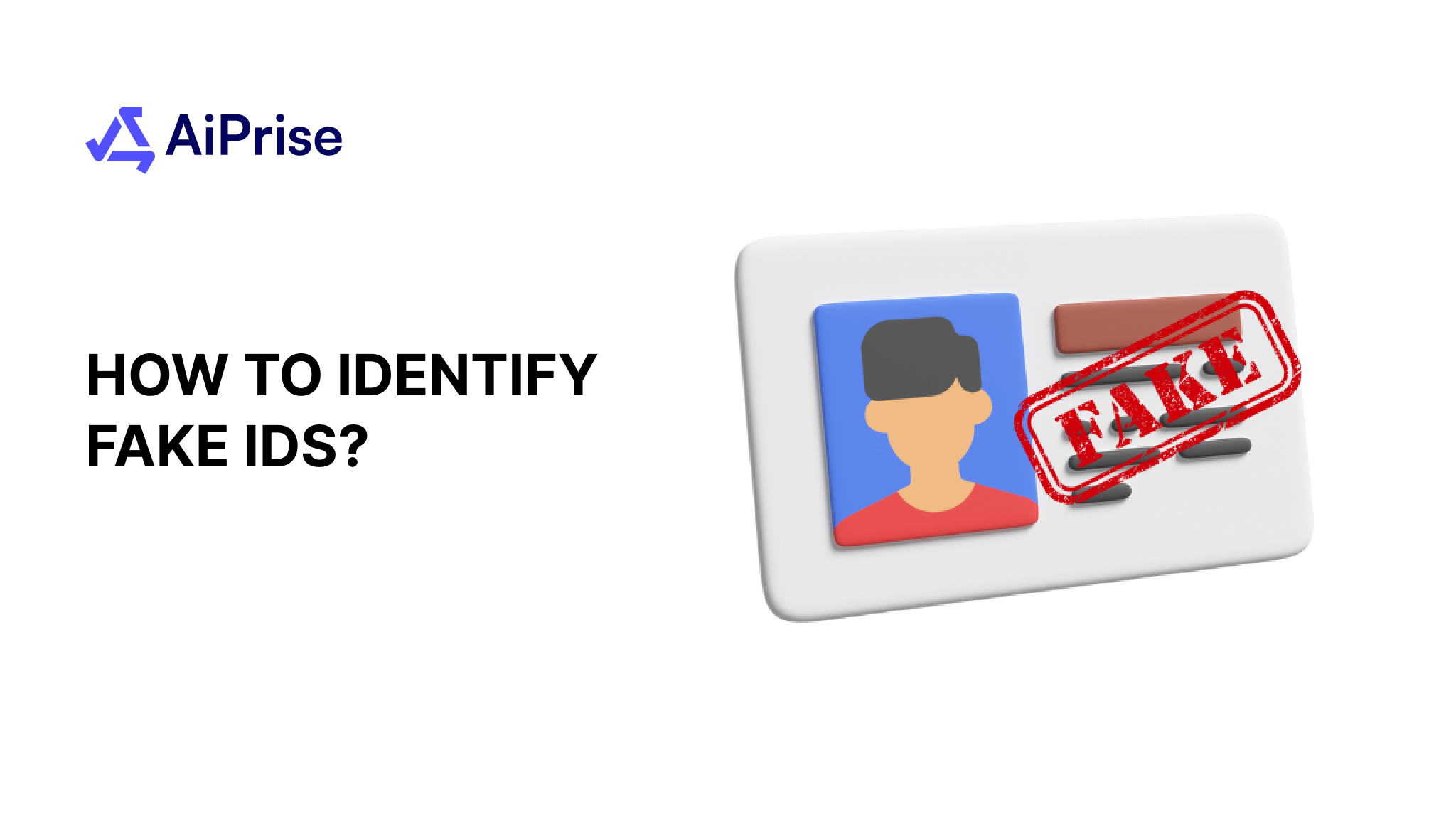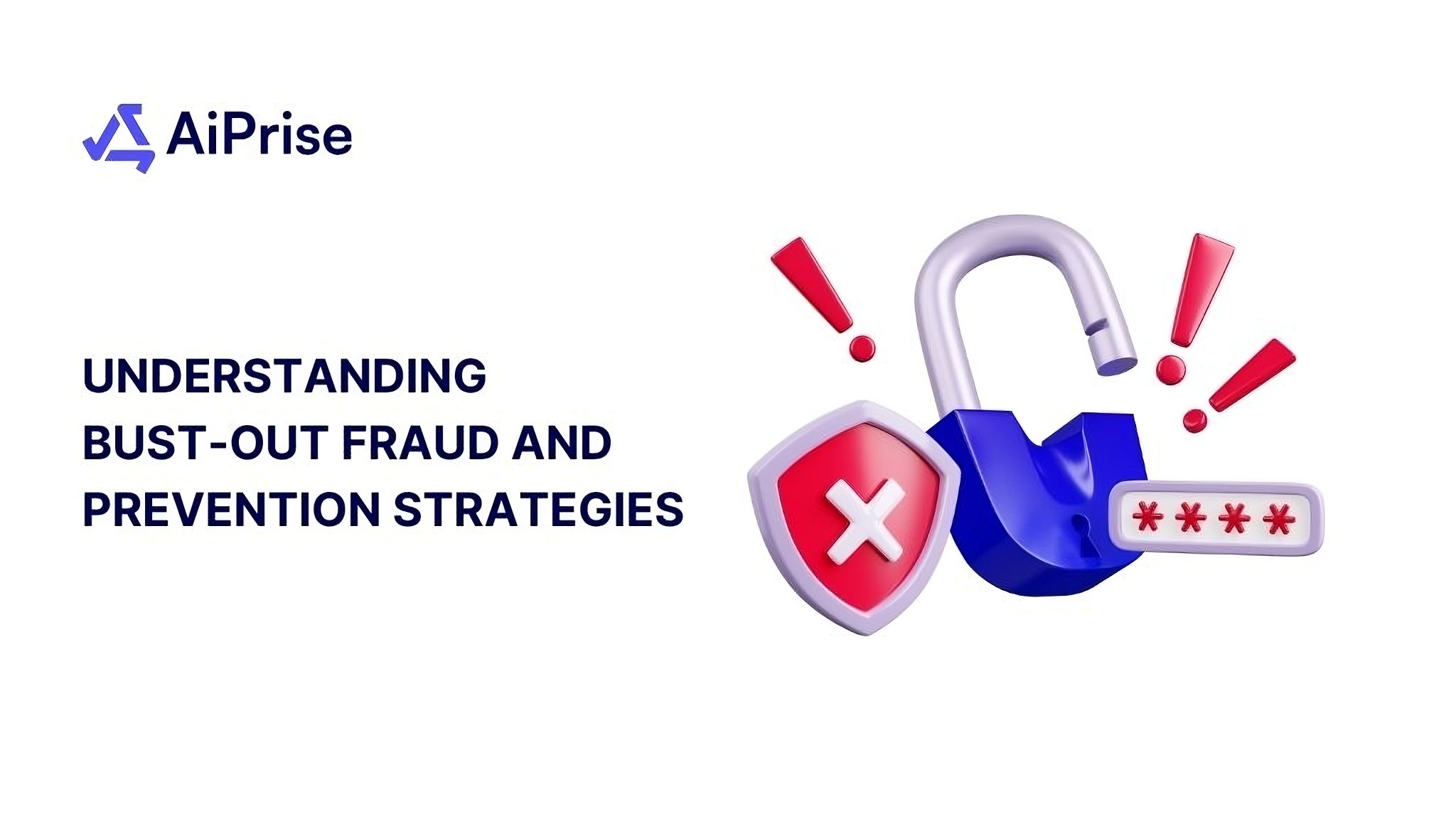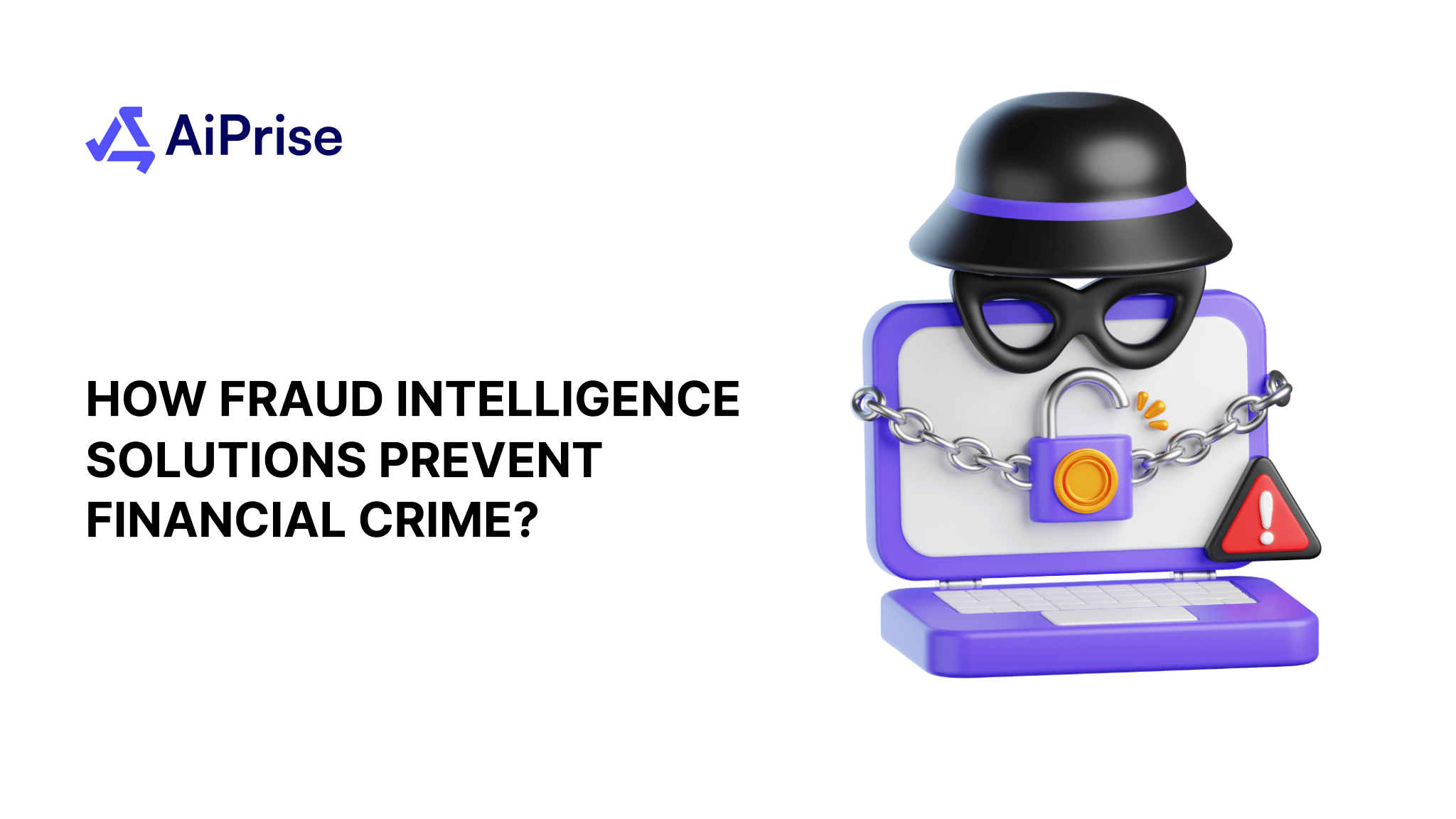AiPrise
11 min read
October 29, 2025
How to Implement an Effective Fraud Prevention Program

Key Takeaways










Fraud is a constant threat to businesses in today’s digital world, and it can have devastating effects on your bottom line. As fraudsters become more sophisticated, it’s no longer enough to rely on basic security measures.
To truly protect your business, you need an effective fraud prevention program that combines strategy, technology, and real-time vigilance.
But where do you begin? How can you build a fraud prevention program that is not only reactive but also proactive?
In this guide, we’ll break down the key steps to designing and implementing a fraud prevention system tailored to your business.
Key Takeaways
- A fraud prevention program is essential for protecting your business from financial and reputational damage by detecting, preventing, and responding to fraud in real time.
- Effective fraud prevention starts with mapping risks across your products, services, channels, and user segments to focus resources on the highest-risk areas.
- Controls and detection methods like KYC/KYB checks, device intelligence, velocity checks, and machine learning models are key to identifying fraudulent activity.
- A well-defined case management and incident response process ensures that fraud cases are investigated, escalated, and resolved quickly, minimizing impact.
- Tracking KPIs such as fraud loss rate, false positives, and approval rate helps monitor the effectiveness of your fraud prevention efforts.
What is a fraud prevention program?
A fraud prevention program is a structured, comprehensive approach designed to detect, prevent, and respond to fraud in real-time. It’s not a one-size-fits-all solution; rather, it’s a set of strategies, processes, and tools tailored to your specific business needs and risk profile.
The core goal of a fraud prevention program is to protect your organization from financial losses, reputational harm, and legal implications while ensuring smooth, frictionless customer experiences.
A robust program typically includes the following key components:
- Risk assessment and mapping: Identify potential fraud risks based on your business model, industry, and customer segments.
- Policy and governance: Clear, defined policies that outline who owns fraud prevention efforts and how incidents are escalated and handled.
- Fraud detection and prevention controls: Tools like KYC (Know Your Customer), device intelligence, transaction velocity checks, and behavioral monitoring to prevent fraudulent activities.
- Incident response and case management: How your team responds when fraud is suspected or detected, including investigations, case logging, and reporting.
- Ongoing monitoring and adaptation: Fraudsters are constantly evolving their tactics, so your program must be flexible enough to evolve in response.
By systematically integrating these components, a fraud prevention program helps businesses not only defend against fraud but also build a culture of vigilance and trust.
Suggested read: Top Fraud Detection Companies and Tools: A 2025 Guide for Businesses.
The next step? Mapping out where your fraud risks lie.
Map Your Risks: Products, Channels, Geographies, and User Segments
Before you can build an effective fraud prevention program, you need to understand where fraud is most likely to occur within your business. This means conducting a thorough risk assessment and mapping out all potential points of vulnerability.
Every product, channel, geography, and user segment comes with its own set of risks, and recognizing these is essential to prioritizing your efforts.

Here’s how to map your risks effectively:
1. Products and Services
Start by assessing each of your products or services. For example, e-commerce platforms, subscription models, digital banking, and payment processing all have unique fraud risks. Consider where fraudsters might attempt to exploit weaknesses, such as through chargebacks, refund fraud, or identity theft. Identify which products have higher fraud exposure based on transaction volumes, customer behavior, or payment types.
2. Channels
Fraud can occur through any channel where transactions or interactions happen. These could include:
- Online: Website, mobile apps, and e-commerce platforms.
- In-person: Point-of-sale (POS) systems or physical store locations.
- Customer service: Phone, email, or chat interactions.
Each channel has its own set of potential vulnerabilities. For instance, online fraud might involve credit card fraud or account takeovers, while in-person fraud could involve counterfeit payment methods. Identifying these channel-specific risks allows you to apply targeted fraud prevention measures.
3. Geographies
Your business’s geographical footprint plays a significant role in the risk landscape. Fraud patterns vary from country to country due to differing regulations, financial systems, and common fraud schemes. For example:
- Some regions may have higher rates of synthetic identity fraud.
- Others might be prone to account takeover fraud, especially if they have lax digital security measures.
You’ll need to understand the fraud spectrum in the areas where you operate, whether it’s a local market or global. This helps determine the level of compliance and security measures needed for each region.
4. User Segments
Not all customers are created equal, and the risk they present varies depending on their behaviors and characteristics. For example, high-risk customers such as new users, international customers, or customers from high-risk industries may be more likely to engage in fraudulent activities.
Mapping these segments helps you apply different levels of due diligence and risk management measures for each group. This is where tools like KYC (Know Your Customer) and KYB (Know Your Business) come into play to verify and assess risk profiles based on customer data.
By mapping these risks, you gain a clearer picture of where fraud is most likely to occur and how best to allocate resources and focus your efforts. With this framework in place, you can implement more targeted fraud prevention measures that are efficient, adaptable, and scalable.
Also read: Understanding Risk Based Lending and Pricing.
Controls and Detection Methods
Once risks are mapped, the next step in your fraud prevention program is designing and implementing effective controls. These controls act as the first line of defense, while detection methods help identify suspicious activity in real time.
Fraud is costly and growing: according to the Nilson Report (2024), global payment card fraud losses will reach $403.88 billion over the next 10 years. A 2023 LexisNexis study found that 50% of fintechs experienced attempted fraud in the past year, highlighting the importance of robust detection systems.

1. KYC and KYB Checks
- Know Your Customer (KYC) verifies individual users’ identities to prevent fraud such as account takeover or synthetic identity creation.
- Know Your Business (KYB) applies the same principles to corporate clients and partners, confirming legitimacy, ownership structures, and regulatory compliance.
2. Device and Network Intelligence
- Track device fingerprints, IP addresses, geolocation, and login patterns.
- Detect anomalies such as multiple accounts from the same device or unusual login locations, which may indicate fraudulent activity.
3. Transaction Velocity and Behavioral Rules
- Implement thresholds for rapid or unusually large transactions.
- Monitor patterns like frequent failed logins, repeated password resets, or unusual purchase behavior to catch potential fraud early.
4. Sanctions and Watchlist Screening
- Screen customers and partners against sanctions lists such as OFAC Sanctions and politically exposed persons (PEP) databases.
- Violations of sanctions regulations can carry heavy penalties. For instance, companies like TSMC could face fines up to $1 billion in cases of export control violations, highlighting the serious financial consequences of non-compliance. This reinforces the importance of real-time screening and staying compliant with global sanctions.
5. Rules-Based vs. Machine Learning Detection
- Rules-based detection relies on predefined thresholds and patterns.
- Machine learning models analyze historical data to identify subtle anomalies and evolving fraud trends.
6. Continuous Monitoring
- Fraud patterns evolve quickly. Continuously monitor transactions, logins, and partner behavior to adapt your controls and detection methods.
- Use dashboards and alert systems to flag suspicious activity and trigger investigations immediately.
By integrating these controls and detection methods, your fraud prevention program can proactively prevent losses while minimizing friction for legitimate customers.
Case Management and Incident Response
Even the most advanced fraud prevention systems will occasionally flag suspicious activity that requires further investigation. When fraud is detected, how quickly and effectively you respond can make all the difference—whether it’s minimizing financial losses, protecting your reputation, or meeting regulatory requirements.
Consider the 2017 Equifax breach, where hackers exploited a vulnerability in a web application to steal the personal information of 147 million Americans. The breach involved data from Social Security numbers, birth dates, and addresses—data that could easily be used for identity theft and financial fraud.
This incident highlighted the importance of having robust case management processes in place, from detection to response and escalation as mentioned below:

1. Incident Detection and Triage
The first step in managing fraud is detection. Once suspicious activity is flagged, it’s crucial to quickly assess the severity and priority of the case. This can be done using a triage system that classifies incidents based on their risk level. For example:
- Low-risk incidents may only require additional verification or manual review.
- High-risk incidents could involve potential account takeover, large fraudulent transactions, or criminal activity requiring immediate escalation.
Also read: Fraud Detection and Prevention Strategies in Banking.
2. Investigation Protocols
Once an incident is triaged, an investigation must begin. Key components of an effective fraud investigation protocol include:
- Gathering evidence: Collect data from all available sources, such as transaction logs, customer communications, and security alerts.
- Cross-department collaboration: Fraud investigations often require collaboration between multiple teams, including compliance, legal, IT, and customer support.
- Documenting everything: Maintain a complete record of all investigative steps taken and evidence gathered. This is essential for both internal audits and external reporting (such as filing Suspicious Activity Reports (SARs)).
3. Escalation and Reporting
If an investigation uncovers serious fraud, the next step is escalation. This typically involves:
- Internal escalation to senior management or specialized fraud teams.
- External reporting to regulatory bodies, law enforcement, or partners, depending on the severity of the fraud. For example, filing SARs with the Financial Crimes Enforcement Network (FinCEN) in the U.S., or reporting suspicious activity to other relevant authorities.
Clear escalation pathways and reporting structures help ensure that fraud cases are addressed in a timely manner and that legal or compliance obligations are met.
4. Playbooks and Standard Operating Procedures (SOPs)
To speed up response times, organizations should have predefined playbooks for common fraud types, such as account takeover, payment fraud, or identity theft. These playbooks should:
- Detail the steps to investigate and verify fraudulent activity.
- List required documentation and evidence that must be collected.
- Outline communication protocols with customers, internal teams, and external authorities.
By standardizing the response, organizations can quickly handle incidents while minimizing the risk of further damage.
5. Post-Incident Analysis and Continuous Improvement
After the fraud case has been resolved, conduct a post-incident analysis to evaluate the effectiveness of the response. Key questions to ask:
- Did the controls detect the fraud early enough?
- Were internal teams able to respond quickly and effectively?
- Are there any gaps in the current fraud prevention measures?
Insights from this analysis should feed into the continuous improvement of the fraud prevention program. It could involve adjusting detection rules, enhancing user verification processes, or providing additional training to staff.
Fraud prevention is not just about catching fraud before it happens; it’s also about how you respond when it does. With a structured case management and incident response process, your business can act quickly, minimize damage, and ensure that fraud does not undermine trust with your customers or regulatory bodies.
KPIs and Monitoring: Metrics to Track, Thresholds, and Continuous Improvement
Tracking the right KPIs and monitoring fraud prevention efforts are crucial to measure success and adapt to new threats. Here are some key metrics to focus on:
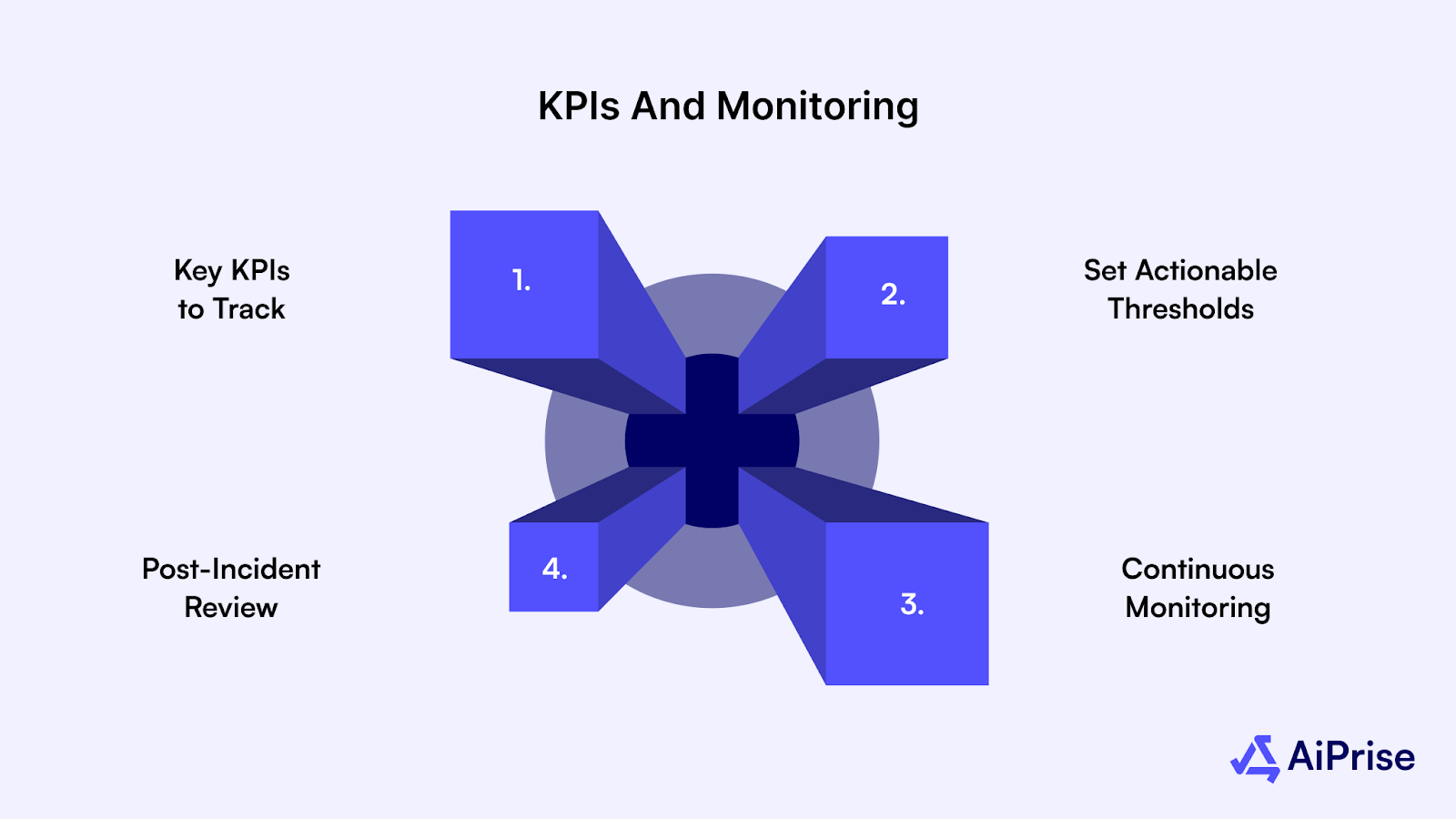
1. Key KPIs to Track
- Fraud Loss Rate: Percentage of fraudulent transactions.
- False Positive Rate: Percentage of legitimate transactions flagged as fraud.
- Chargeback Rate: Frequency of fraud-related chargebacks.
- Approval Rate: Percentage of approved transactions.
- Response Time: Time taken to detect and respond to fraud alerts.
2. Set Actionable Thresholds
Establish thresholds for each KPI, such as:
- Fraud Loss Rate: If it exceeds 0.5%, investigate the system.
- False Positive Rate: Adjust systems if above 5% to reduce customer friction.
3. Continuous Monitoring
Fraud trends evolve, so continuous monitoring is essential.
- Behavioral Analytics: Track shifts in customer behavior.
- Transaction Monitoring: Watch for patterns in transactions.
- Machine Learning Monitoring: Ensure AI models stay effective and current.
4. Post-Incident Review
After an incident, analyze how your system performed, identify gaps, and adjust accordingly to improve detection and response times.
Continuous monitoring and adapting based on KPIs ensure your fraud prevention program stays effective in minimizing losses and improving efficiency.
Aiprise: Simplifying Fraud Prevention
Aiprise provides a powerful, AI-driven platform that simplifies fraud prevention, enabling businesses to scale securely while maintaining strong fraud controls. With Aiprise, businesses can automate complex verification processes, streamline case management, and ensure real-time monitoring, all while reducing manual effort and human error.
Key Features of Aiprise:
- Global Compliance Simplified: A single integration ensures local compliance in multiple regions, making it easier to scale internationally.
- Customizable Onboarding Flow: Design an onboarding process that adapts to your specific business needs while ensuring compliance with global regulations.
- AI-Powered Risk Management: Aiprise uses machine learning to detect fraud patterns and prevent risky transactions, while ensuring legitimate users have a smooth experience.
- Ongoing Fraud Monitoring: Real-time transaction monitoring and continuous fraud checks protect your business from emerging threats.
- AI-Driven Compliance Co-Pilot: Automate complex document analysis and enhanced due diligence (EDD) reporting, reducing manual review time by up to 95%.
- Unified Compliance Dashboard: Aiprise’s dashboard integrates case management, monitoring, and audit trail tracking, enabling a comprehensive view of your fraud prevention efforts.
Aiprise helps businesses not only reduce fraud but also improve operational efficiency, providing a seamless, scalable solution for effective fraud prevention.
Conclusion
Implementing an effective fraud prevention program is essential for businesses to safeguard their revenue, reputation, and customer trust. By mapping risks, setting clear policies, using the right detection methods, and continuously monitoring results, businesses can stay ahead of fraudsters and respond quickly when fraud is detected.
Having solutions like Aiprise simplifies this process, providing AI-powered tools for real-time monitoring, fraud detection, and compliance, all while minimizing manual efforts. A solid fraud prevention program is not just about stopping fraud—it's about building a system that adapts, evolves, and scales with your business.
Start building your fraud prevention strategy today and ensure your business remains protected against evolving threats while fostering trust and security with your customers.
Book a Demo to see how Aiprise can simplify your fraud prevention efforts and help you scale securely.
Frequently Asked Questions (FAQs)
1. What is a fraud prevention program?
A fraud prevention program is a set of processes, tools, and strategies designed to detect, prevent, and respond to fraud. It includes risk assessment, monitoring, case management, and continuous improvement to protect the business from financial losses and reputational damage.
2. How does fraud detection work in a fraud prevention program?
Fraud detection in a prevention program relies on analyzing transaction patterns, customer behavior, and risk signals. Using machine learning, rule-based detection, and real-time monitoring, the system identifies anomalies that could indicate fraudulent activity, enabling quick responses.
3. What are the key components of a fraud prevention program?
Key components include:
- Risk mapping to identify vulnerabilities.
- KYC/KYB checks for customer verification.
- Real-time monitoring of transactions.
- Incident response and case management to investigate and address fraud.
- KPIs and performance tracking to measure the program’s effectiveness.
4. How can Aiprise help with fraud prevention?
Aiprise offers an AI-powered fraud prevention platform that simplifies identity verification, automates risk management, provides real-time transaction monitoring, and ensures compliance. It helps businesses scale securely by reducing manual effort and improving fraud detection accuracy.
5. Why is continuous monitoring important in fraud prevention?
Continuous monitoring is essential because fraud tactics evolve quickly. By tracking transactions and user behavior in real time, businesses can detect emerging threats, minimize fraud losses, and adapt their fraud prevention program to stay one step ahead.
You might want to read these...

Aiprise has helped streamline our KYB (Know Your Business) flow in 100+ countries. No other tool comes close.





Speed Up Your Compliance by 10x
Automate your compliance processes with AiPrise and focus on growing your business.






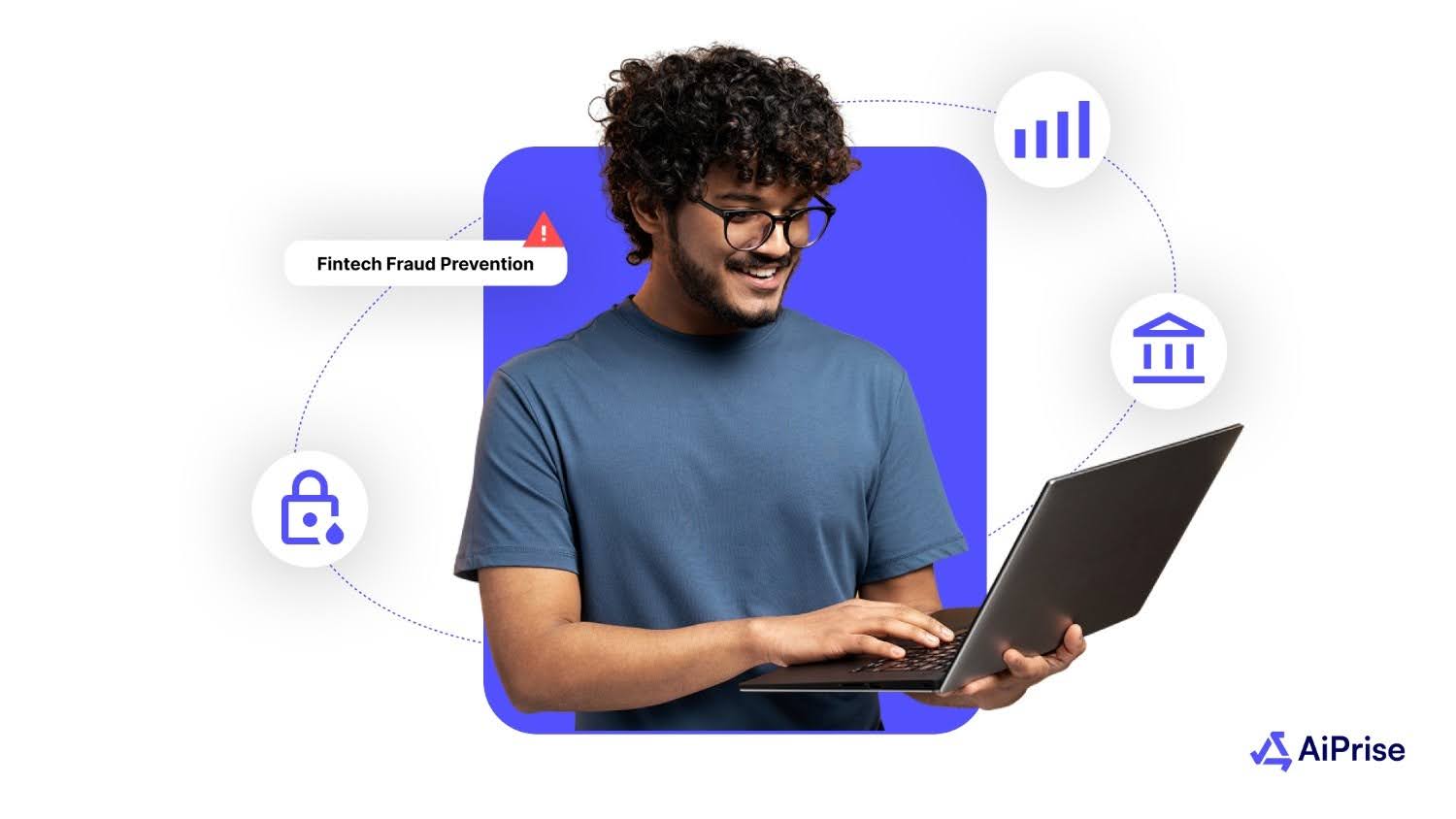
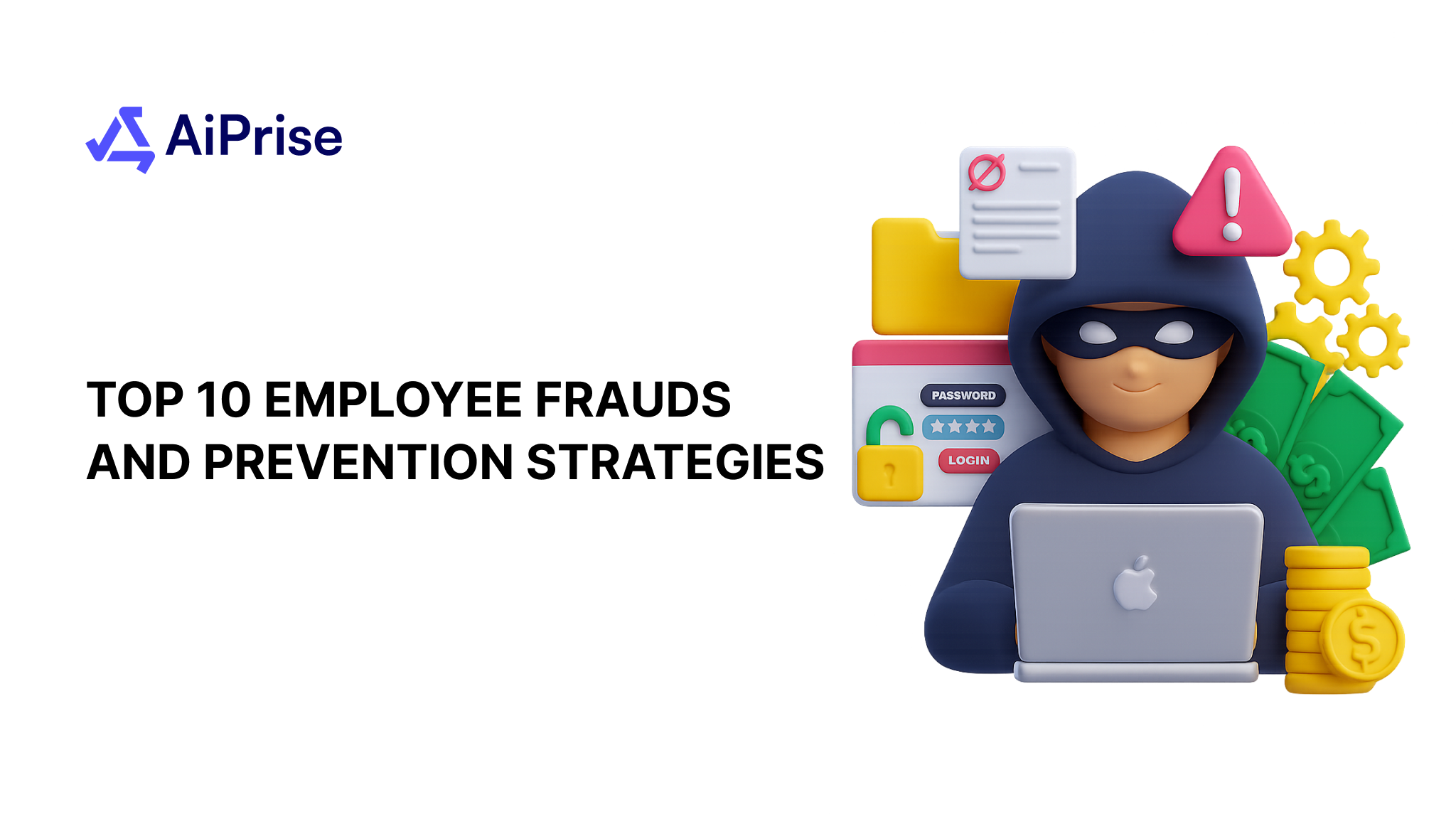
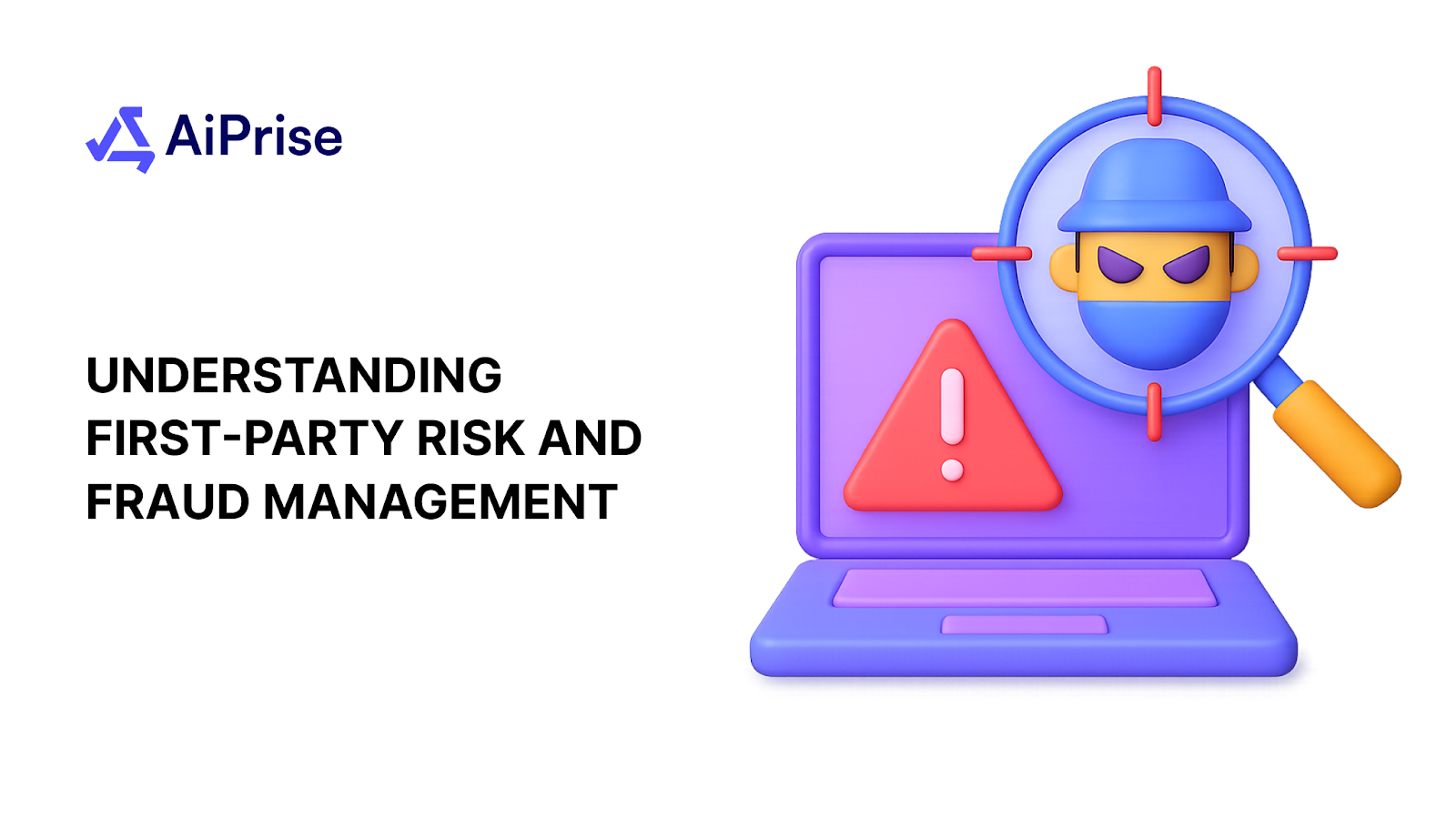
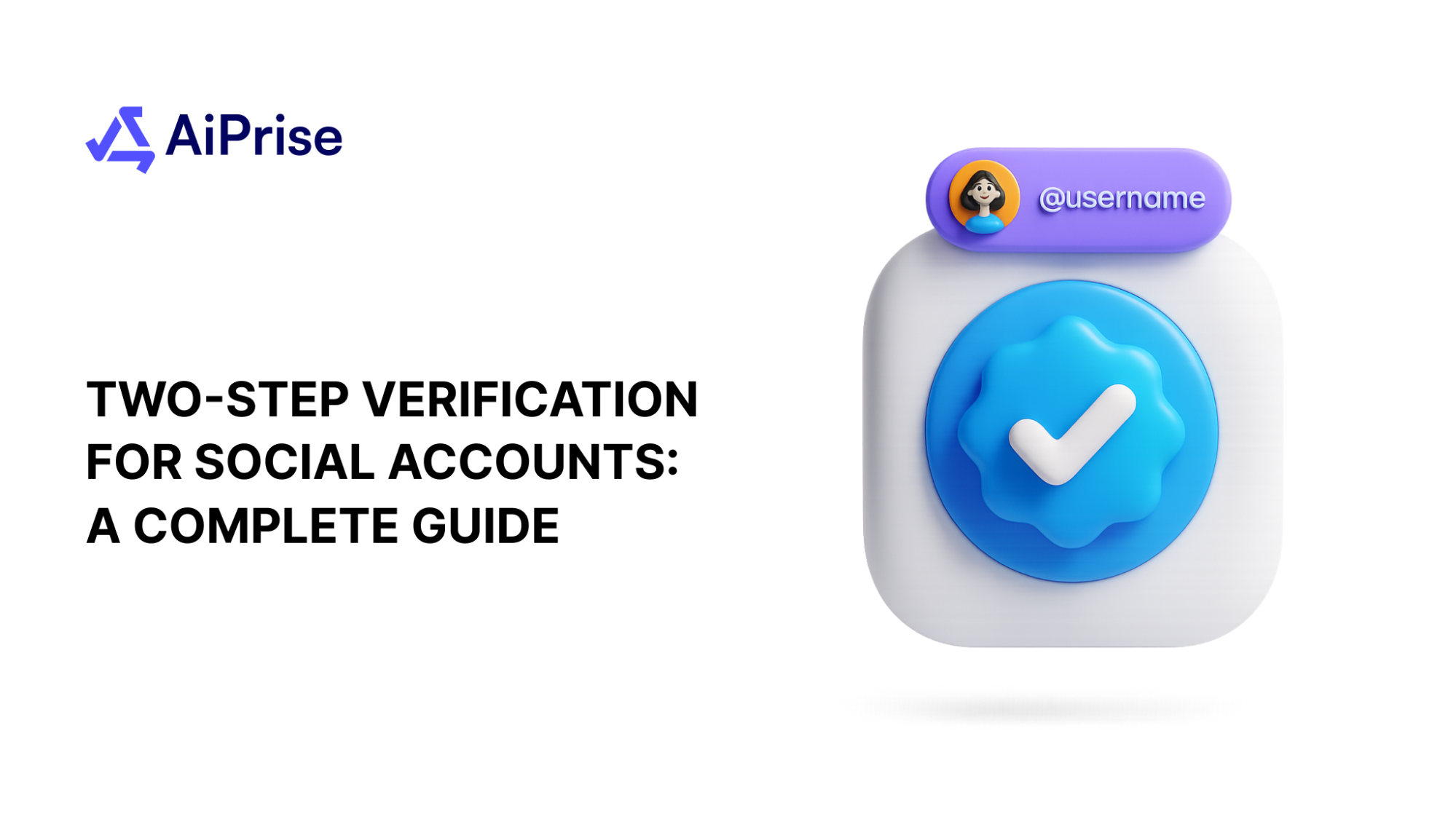
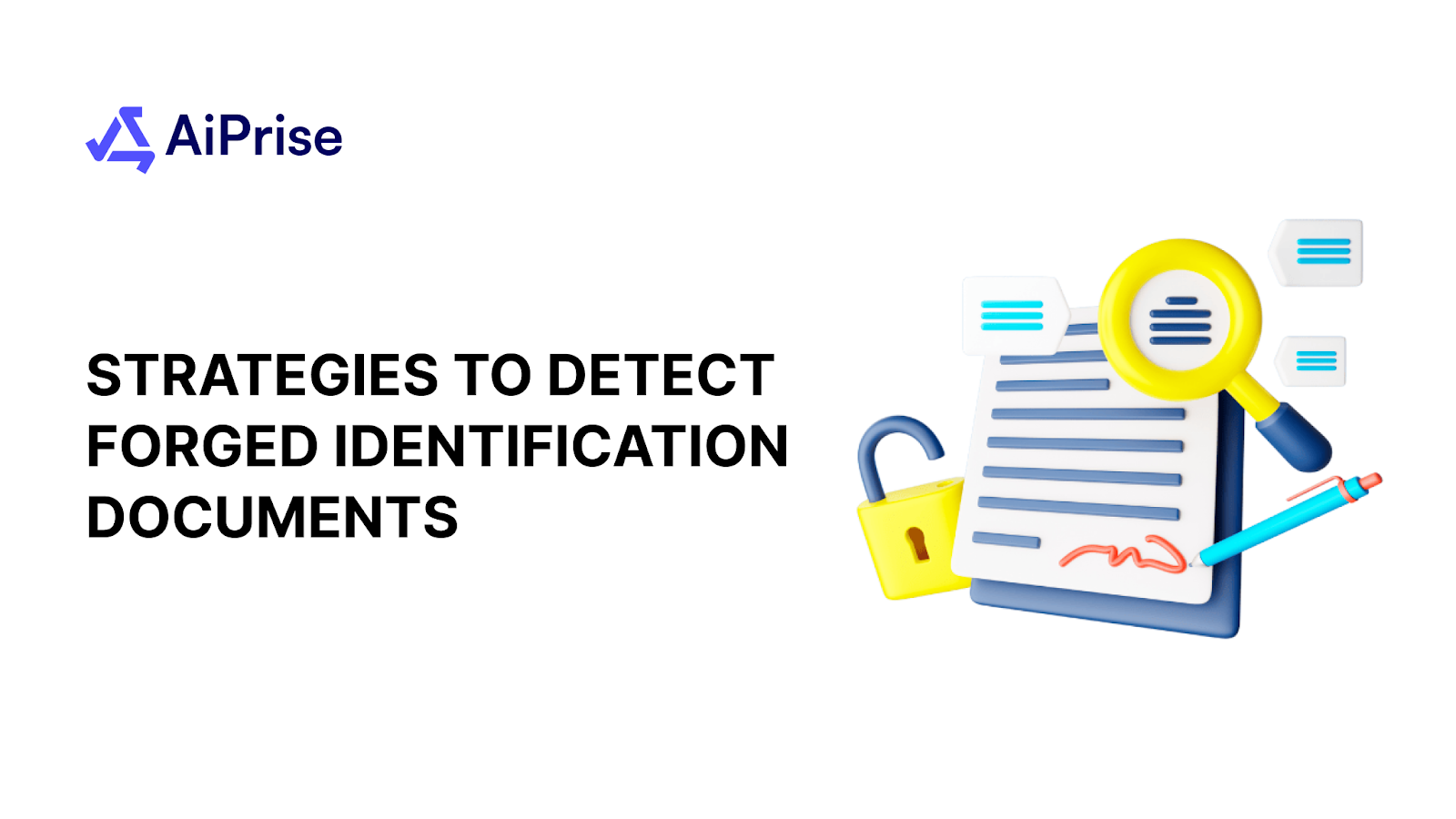



.png)
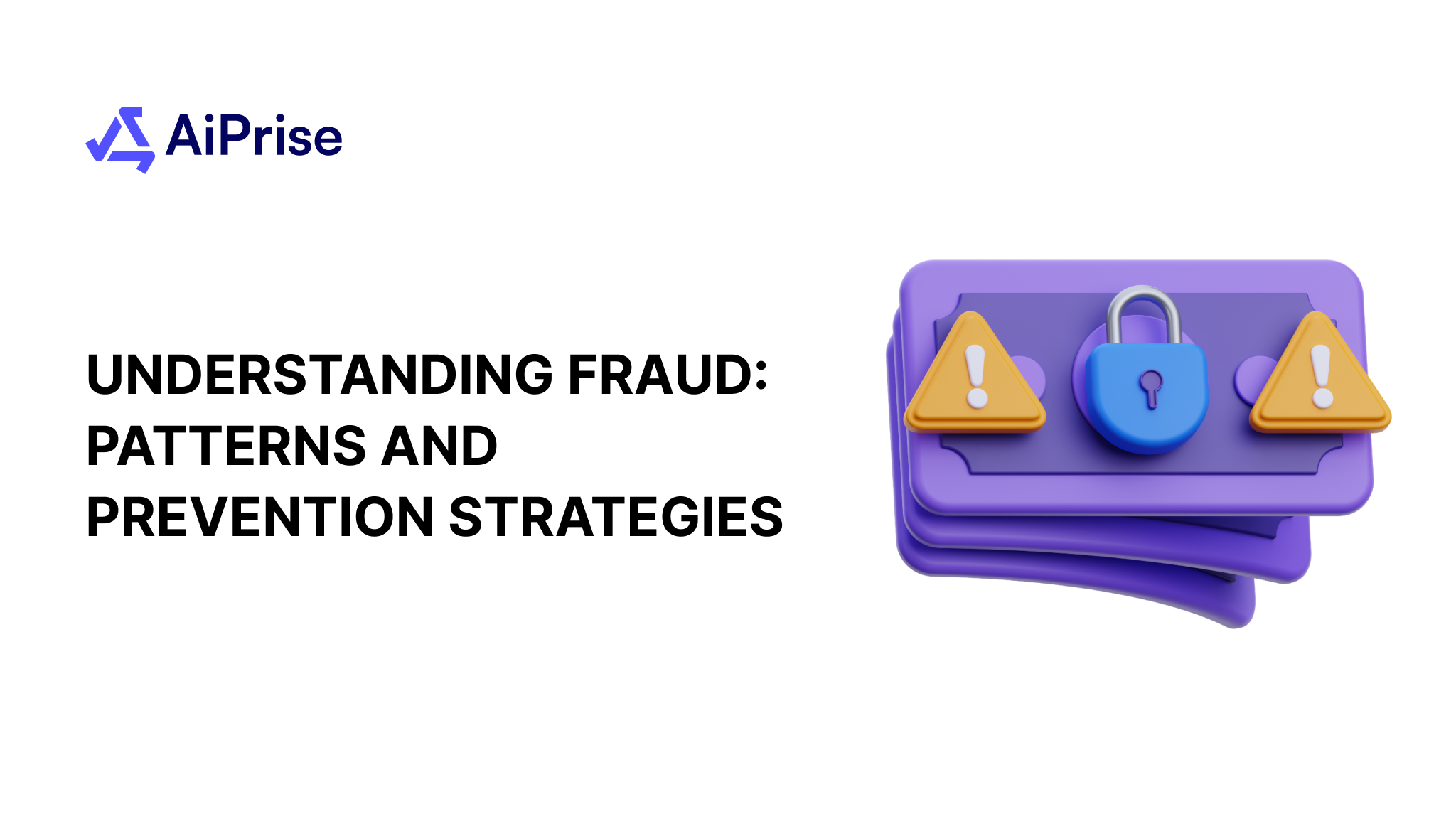
.png)
.png)
